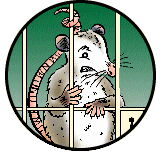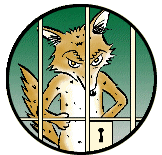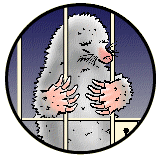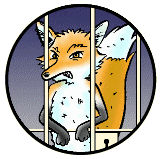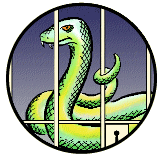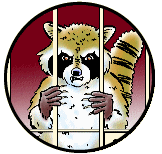




RACCOONS
may live in your attic, chimney, shed, garage or nearby buildings. Nests can block vents and cause fire and carbon monoxide hazards. They damage roofing, gutters, soffits, wiring , gardens, lawns and yard materials. Droppings foul yards and play areas. Injury risks: bites and scratches. Diseases: major rabies carrier and raccoon roundworm parasite risk.
DEER
Deer are generally docile, but they are still wild animals and can be unpredictable. They leave behind unwanted droppings on your lawn, significantly damage your landscaping and as a carrier of ticks can expose your family and pets to many tick borne diseases. Disease Risks to Humans and Pets: Lyme disease, Alpha-gal Syndrome, Tularemia, Rocky Mountain Spotted Fever, anaplasmosis, babesiosis and heartland virus among others.
OPOSSUMS
may build their dens in your attic, garage, shed or other structures. They are also known to create major disruption in the process. They are known to raid gardens, bird feeders, pet areas and trash. Injury risks: bites and scratches. Disease risks to humans and animals: mange, rabies and occasionally raccoon roundworm.
GOOSE
droppings soil public and private lands, endangering humans and other wildlife, as well as degrading water quality. Persistent and ever-growing flocks of geese require special management techniques to gain control of the problem and prevent recurrences. See our special goose control page for more on this widespread public and private nuisance.
SKUNKS
often den under porches, decks, foundations, garages, barns, or sheds. They provide a potentially smelly presence with their ability to spray defensively up to 16 feet and 6 times in succession. May fall into and be trapped in window wells, and dig up your lawn seeking food. Disease risks: Rabies, distemper.
MOLES
make their home in your lawn. Constantly searching for insects to eat, they tunnel just below the surface, creating raised mounds of soil with every move. They can cause extensive damage to manicured lawns. One mole can dig up to 150 feet of new tunnels a day. No major disease risks but they can bite and scratch.
SNAKES
gain access to your home through foundation cracks, open basement windows, gaps around pipes and torn screens. They may frighten your family and emit foul smells upon handling. Disease risks: may spread salmonella bacteria to humans. Injury risks: bites can be painful, become infected and cause reactions.
